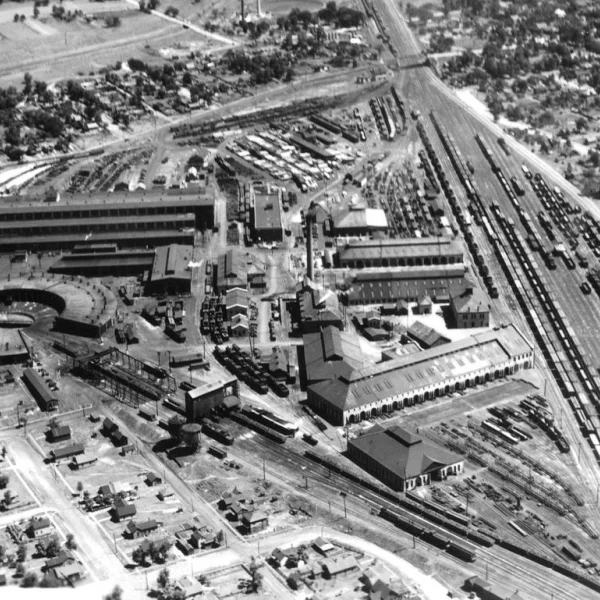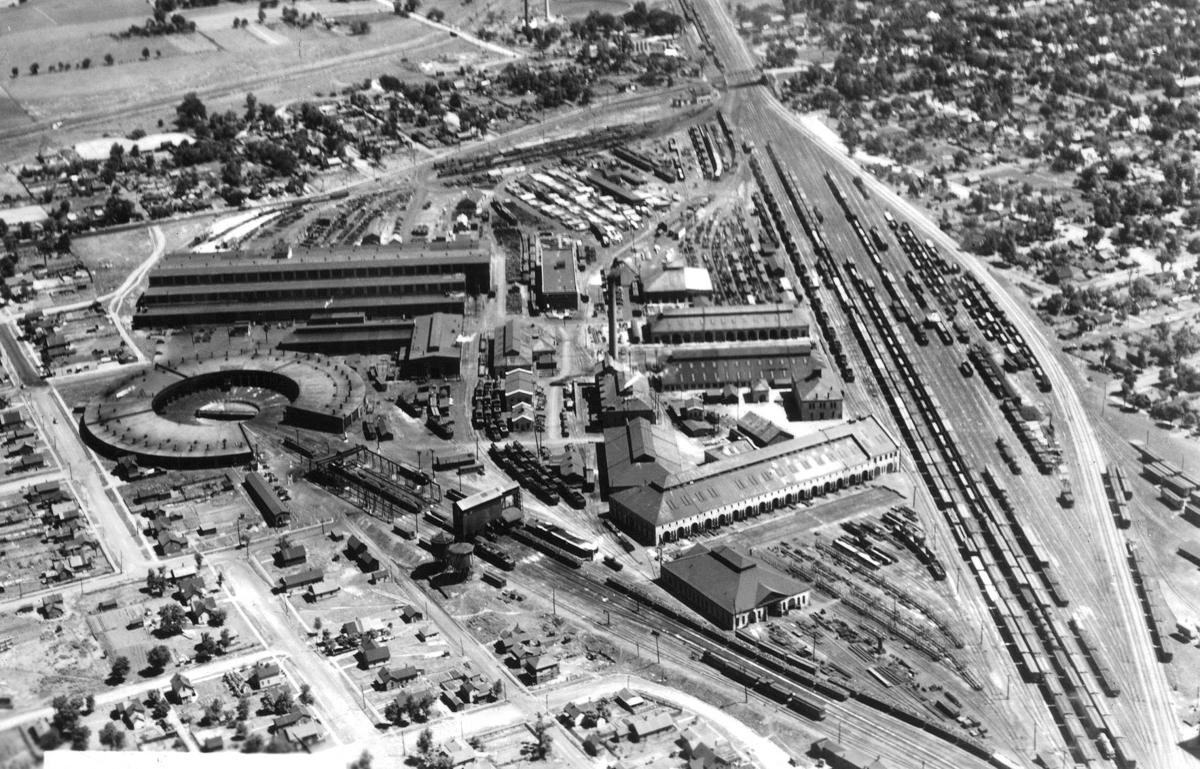Local and state governments often offer incentives to keep existing businesses or attract new ones. These inducements—in the form of land giveaways, promised infrastructure improvements, tax rebates and the like—can prove controversial, causing some public officials and voters to recoil at the prospect of spending public dollars on private enterprise.
Controversial or not, local leaders have employed this economic development approach for more than a century to either retain or lure businesses, which were usually manufacturers.
One common method to raise funds was by means of a subscription campaign, either limited to the business community or opened to the wider public. One of the most successful campaigns of this type occurred in 1910 when area residents pledged money to keep the Chicago & Alton (C&A) Railroad Shops in Bloomington.
From the Civil War era into the early 20th century, the largest local employer was the C&A Railroad, which operated a sprawling repair shops and rail yard complex on Bloomington’s west side.
It was within this “city-unto-itself” that an army of skilled craftsmen and semi-skilled laborers maintained, repaired, and refurbished steam locomotives and freight and passenger cars. This work required the attention of upwards of 2,000 or more boilermakers, machinists, pattern makers, carpenters, painters, upholsters and others. In addition, the shops served as the home for locomotive engineers, firemen, brakemen and conductors who plied the rails on C&A passenger and freight trains.
Around 1910 word spread that C&A officials were looking to abandon Bloomington and its increasingly cramped west side shops for greener and roomier “pastures” elsewhere. Spurring the need for relocation or expansion were ever larger and more powerful steam locomotives that required more and more space for maintenance work and such. Around 1910 the C&A began upgrading its motive power roster by purchasing 20 state-of-the-art Mikado-type locomotives. Another complement of Mikados and even larger engines would soon follow.
When it came to the C&A Shops, Springfield, Ill. was happy to play the role of jobs “poacher” by offering ample free land as an incentive for relocation.
Bloomington business leaders, obviously, were not willing to stand idly by as the C&A abandoned the city without a fight. Accordingly, they drew up their own incentive package to help facilitate expansion of the existing west side site.
The plan created by the Bloomington Business Men’s Association entailed raising $165,000 (the equivalent of more than $4.2 million today, adjusted for inflation) from area residents for a C&A Shops improvement fund. This money, raised during a 40-day campaign in the spring of 1910, was then used to buy property and demolish homes north and west of the shops to make room for much needed expansion.
In exchange for raising enough money to purchase and clear adjacent land, the C&A agreed to invest around $1 million in enlarging and upgrading the shops, with most money going for new buildings, equipment and trackage.
Around six blocks of scattered residential development, which included some 50 or more houses were eventually cleared to make way for the expansion. The parcels in question zigzagged north and west of the shops, but roughly speaking, involved much of the land north of Graham Street and east of Morris Avenue.
The fundraising campaign got underway sometime in late April and picked up “steam” (pun intended) over a two-week period in late May. There were rallies and speeches on the courthouse square and all sorts of call-to-action events.
On May 26, for instance, women and children fanned out across the community selling “Boost Bigger, Beautiful Bloomington” buttons, with all proceeds going to the C&A Shops improvement fund. The collections of the McLean County Museum of History include one of these red-and-white pinback buttons.
In the end the campaign collected nearly $179,000. About $1,800 remained after acquiring the land, and another $4,700 was earned from the salvage of buildings and building materials. That money, around $6,500, was then rebated to subscribers.
The first stage of the C&A Shops expansion project was completed in 1911 with the erection of a new 44-stall roundhouse (see accompanying photograph). The roundhouse featured a 100-foot turntable, two 100,000-gallon steel water tanks and a 600-ton coaling dock that could simultaneously service four locomotives on four separate tracks.
In early May 1913, C&A President B.A. Worthington announced the second and final phase of the expansion project, promising Bloomington that it would soon be home to “the best planned and equipped shops in the country.”
The expansion, completed in late 1914, included the erection of a mammoth machine shop; freight car repair shop; storehouse and office building; oil house; blacksmith shop; and pattern storage building; among other structures. There were also additional capital improvements, such as a 10-ton capacity yard crane; a dry kiln; paint, oil, and waste stores; and additional trackage to improve the yard’s capacity to shuttle locomotives and rolling stock into, around, and out of the shops.
When it was all said and done, the C&A spent around $1.8 million on the expansion project, well in excess of the amount promised in the initial agreement.
Little did anyone know it at the time, but the golden age of steam railroading would be at an end within a few decades, thanks in great measure to the development of diesel locomotives and the increasing popularity of automobiles.
Diesel locomotives required far less maintenance than their steam counterparts, and the workforce at the C&A Shops declined in measure. By the early 1950s, the west side shops were a shadow of their former bustling self.
On the Alton Railroad the diesel era arrived in 1936 with the inaugural Chicago-to-St. Louis run of the streamlined passenger train “Abraham Lincoln.” Thirteen years later, the Gulf, Mobile and Ohio Railroad, which had bought the Alton, became the first mainline railroad to fully dieselize, a milestone that rated coverage in Life magazine.
Furthermore, the automobile was making enormous inroads as a viable alternative to passenger rail service, especially given the rapidly expanding network of “hard” (that is, paved) roads and highways. By the 1930s the Alton faced increasing competition from the national highway that paralleled it for much of the way between Chicago and St. Louis—Route 66.
Yet back in the early 1910s, the nation still moved by hulking but elegant steam locomotives, making the west side shops invaluable to the economic vitality of Bloomington.
“It’s the C&A Shops and McLean County’s great soil and up-to-date farmers that had made Bloomington the best town in Illinois,” observed The Pantagraph in 1910. “Take either one away and you’ll have a mighty poor city."

